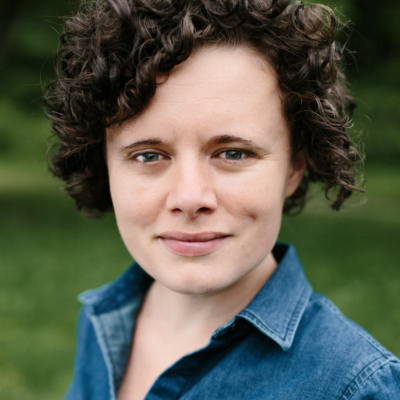|
Mercedes Helnwein’s “The Beautiful Person” provokes and questions observers at Second Street Gallery. (Courtesy the artist) |
What are you looking at? A stern portrait’s half-lidded stare seems to ask this the moment anyone walks through the door at Second Street Gallery. And in artist Mercedes Helnwein’s show “The Beautiful Person,” it’s a question well worth considering.
Take “Erika,” the first large-format pastel visitors encounter. It’s difficult to tell if she is a woman or a girl, despite the expert technique laid down in the composition of her face. Is her gaze seething or merely bored? Should the viewer feel provoked or sympathetic, as though having pried into a private moment? A closer look offers few clues but riches in detail—her textured gold hair shading to black at her shoulders. Fire orange beneath her jaw. Magenta at the creases of her nose. Electric blue, almost unnoticeable from a distance, tracing out her eyelashes and helping the colors converge in a commanding glow. “I love that you don’t know if it’s ominous or innocent,” said Rebecca Schoenthal, who curated the show with works courtesy of the Merry Karnowsky Gallery in Los Angeles.
Along with the pastels, she picked out 10 pencil drawings and three photographs to flesh out Helnwein’s range, which has seeped like spilled varnish into various corners of the arts since her first show in 2003. Schoenthal explained that each image began with photos of models positioned in clothing, and sometimes small toys, carefully chosen by the artist. The lone exception is a pencil drawing entitled “Men,” taken from a magazine image of suited business types gathered close as they watch the stock market implode in 2008.
The photographs are actually stills from a short film that accompanied a 2010 show hosted by the musician Beck. Called “Temptation to be Good,” it explored Helnwein’s fascination with the overlooked crannies of rural America and its religion. The imagery is similar to the other Second Street selections, featuring young women presented with little context but concealing weighty emotions in their expressions and bodies. In the film they variously face a darkened corner or an open doorway, reeling from its light. It was inspired by a soundtrack from her brother, the classical composer Ali Helnwein.
Children of the Austrian-Irish artist Gottfried Helnwein, they grew up in castles in Germany and Ireland. Mercedes Helnwein still lives in the latter country for part of the year since moving to L.A. and, among many other things, publishing a novel involving Florida newlyweds on a road trip with an unintentionally kidnapped 10-year-old boy. The creative wealth packed in her biography shows in her work, but it’s focused with the intensity of light through a magnifying glass onto simple scenes. Two of the best examples face each other at the back of the gallery and feature a girl named Pam. She has silky beehived hair, carefully plucked eyebrows and a face that’s pale and soft. In “Pam’s Feeling,” a full-body drawing in pencil shows her hands up, palms facing the viewer, as though she is being robbed. Her wide eyes are cast upward. The accompanying pastel drawing of her head, called simply “Pam,” offers even fewer clues. On paper nearly six feet tall, she still looks up with the light hitting her from above. Its reflection in her irises shining green like wine bottles, almost seems to reveal the thing or person causing her concern.
What that is, though, is not for us to know. “What are you looking at?” one wants to ask. Instead of clear statements or suggested narratives, Helnwein offers a disquieting but beautiful mix of sweetness, ennui or something more sinister. As Schoenthal put it, “You could create a billion stories out of this.”
/MHelnwein2.jpg)





